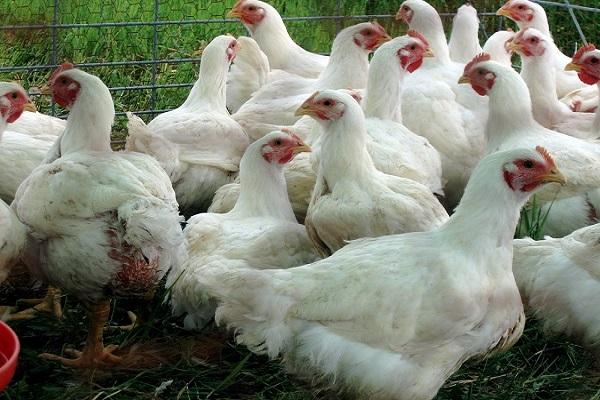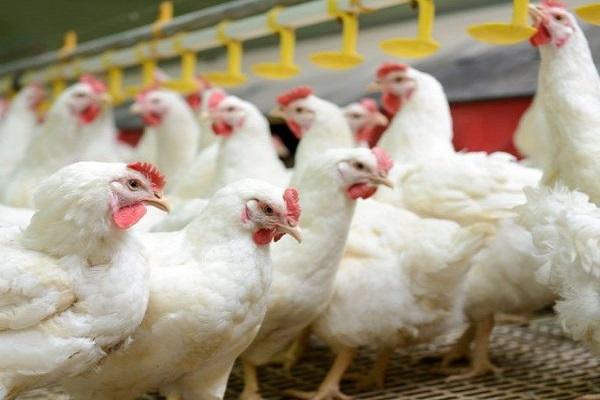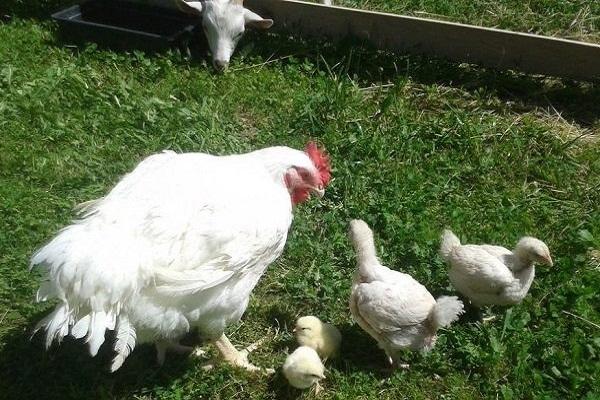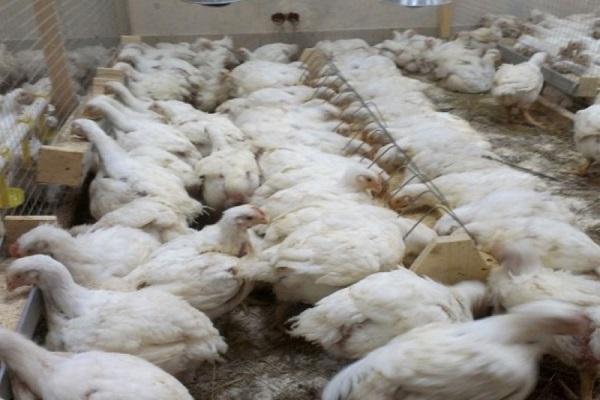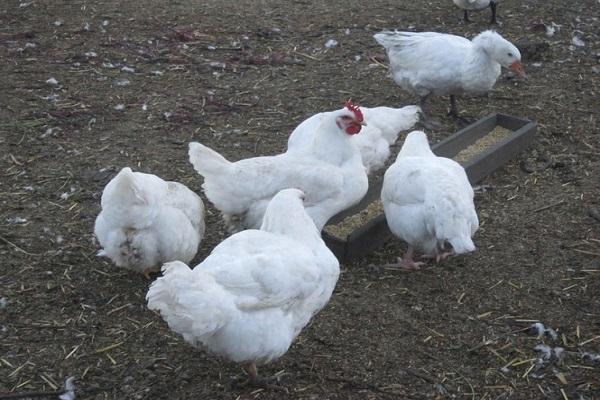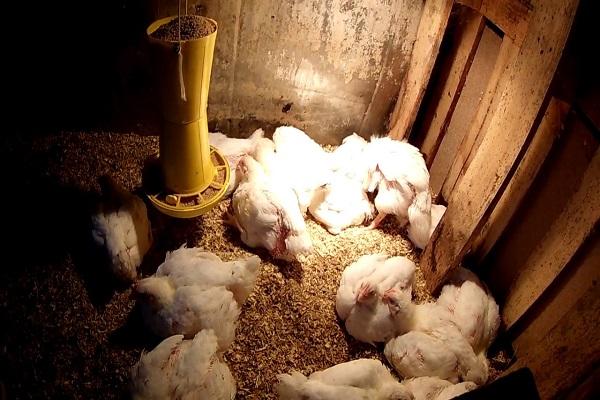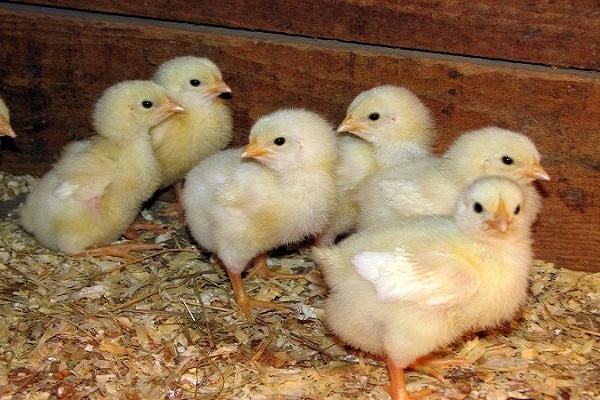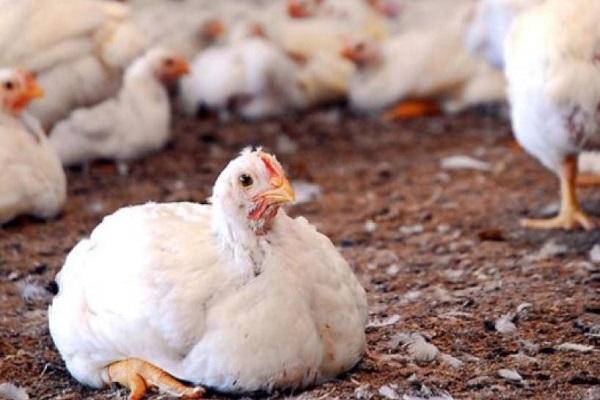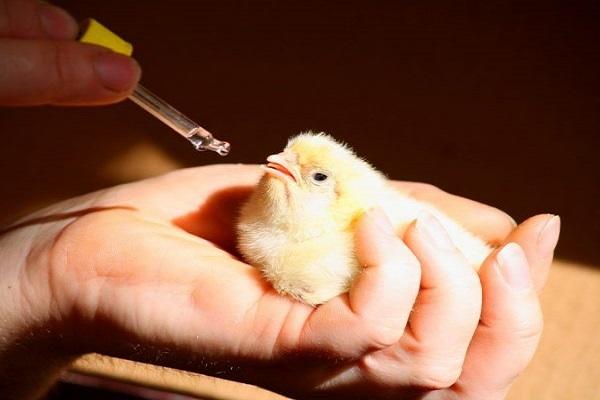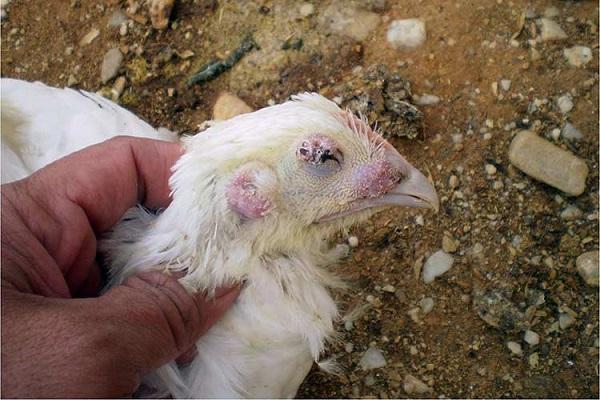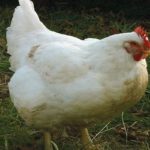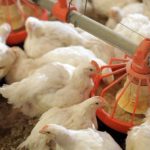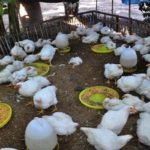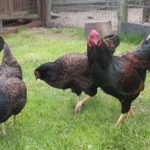Buyers prefer to buy broiler chicken breeds. The meat cooks faster and has a tender texture. Farms are trying to satisfy the desires of customers. Broilers of the Cobb 500 cross lead among competitors in weight gain, feeding efficiency, and marketability of the skin. Due to their positive characteristics, they are grown by farmers all over the world and private farms.
- Description and characteristics of the breed
- Appearance of chickens
- Bird productivity
- Weight and height of chickens by day
- Conversion costs
- Egg production
- Character of the breed
- Advantages and disadvantages
- Specifics of maintenance and care
- Optimal conditions
- Temperature
- Light mode
- Poultry house treatment
- Features of poultry feeding
- Broiler nutrition by day
- Self-production
- Additives and water
- Breeding chickens
- Incubation
- Caring for day old chicks
- Feeding
- Possible diseases and their prevention
- Dyspepsia
- Bronchopneumonia
- Marek's disease
- Avitaminosis
- Enteritis
- Aspergillosis
- Salmonellosis
Description and characteristics of the breed
Czech broilers are popular all over the world. In a short period of time, farmers raise meat chickens at low cost.
Appearance of chickens
The Cobb 500 broiler breed is distinguished by its snow-white plumage. All the birds, as if chosen, are large and massive. The difference in weight is minimal between males and females. The leather is naturally yellow in color, enhancing its presentation.
Bird productivity
Broilers are highly productive. At the age of 30-45 days, broilers are suitable for slaughter. Weight varies from 1.5 to 2.5 kilograms. 73% of the meat comes from one bird. Weight gain increases rapidly over 11 weeks. Subsequently there is a decline.
Weight and height of chickens by day
When roosters and hens are fed together, weight gain by day is shown in the table.
| Age (in days) | Weight (gram) | Daily gain (grams) |
| 0 | 41 | |
| 10 | 260 | 26 |
| 20 | 775 | 39 |
| 30 | 572 | 52 |
| 40 | 2456 | 61 |
| 50 | 3246 | 65 |
| 56 | 3644 | 65 |
The weight gain is clearly visible at the age of 1-2 months.
Conversion costs
Compound feed for cross breeds can be the cheapest, but this does not affect the productivity of the breed. Feed conversion, compared to competitors, is the most profitable. The share of feed cost in the cost of cultivation is 60%.
Egg production
Broilers have low egg production. Individuals begin to lay eggs at the age of 7 months - this is quite late compared to competitors. A chicken lays 1 egg every 3 days. The weight of one unit is 58 grams, which is also considered low.
Character of the breed
Cobb 500 broilers are friendly and calm. They are not afraid of the presence of people.Sometimes young individuals suffer from aggression and cannibalism. This behavior is explained by excessive daylight hours. Young bullies are seated in different cages.
Advantages and disadvantages
Cobb 500 broilers have a number of advantages, the main ones: fast growth, high weight, and disease resistance. A negative characteristic is cold intolerance, which requires additional costs for heating the chicken coop.
Specifics of maintenance and care
At home, raising broilers consists of cage, floor housing. The room should be ventilated and warm. Birds are kept separately from other breeds.
Optimal conditions
During the growing process, the Cobb 500 broiler breed requires the implementation of certain rules that promote rapid weight gain. The correct temperature and light conditions are established, starting from one day of age. Keep the chicken coop clean.
The amount of planting per 1 m2 is 30-42 kilograms of live weight.
Temperature
For chickens, the temperature regime is +27 °C…+33 °C. After a week, the heat level is reduced every day by 2 degrees. Lower the temperature to at least 14 degrees.
Light mode
Chicks require 24-hour lighting. After 14 days, daylight hours are reduced by 1-2 hours. Until a 14 hour day is established. Direct sunlight is contraindicated.
Poultry house treatment
The new herd is introduced into the prepared room. Remove debris and disinfect. The walls and floors are covered with lime. In the future, monitor the cleanliness of the litter. It is changed completely or partially 2 times a week for adults, for young animals - every other day.
Features of poultry feeding
As feed for broilers, they use specialized feed or prepare it themselves.
Broiler nutrition by day
In the first 10 days, chickens benefit from fine-grained starter feed. In the next 11-22 days, there is a rapid increase in muscle mass; granulated food, for example Rost, is required. At the age of 1 month and beyond, they are fed with finishing compound feed.
Self-production
Food prepared independently must contain proteins, vitamins, minerals, and trace elements. The diet of broilers includes vegetable grain mash, oil cake, meat broth, and meat and bone meal.
Additives and water
Clean water should be freely available in the poultry house. They change it every day. In addition to the main food, the diet includes crushed shells, chalk, coarse sand, feed yeast, salt, and grass flour.
Breeding chickens
It is not possible to breed purebred broilers at home. The characteristics of each subsequent offspring deteriorate and productivity decreases. This is explained by the breeding of the hybrid by special crossing.
Incubation
Eggs for the incubator are purchased from the manufacturer in order to obtain a purebred breed. The incubator is heated to 25 degrees before laying the eggs. The temperature is maintained within 37.6-37.8 degrees Celsius. After 21 days, offspring appear. Laying hens of a different breed are also used.
Caring for day old chicks
Day-old chicks need a dry, warm, well-lit and ventilated room.
Feeding
For young animals, special feed is used. Feeding is carried out 8 times a day. Constant lighting helps to find food. In subsequent weeks, reduce the number of feedings. By the age of one month, feeding of young animals is increased to two meals a day.
Possible diseases and their prevention
Cobb 500 broilers are disease resistant. Improper maintenance, feeding, and care can cause diseases.
Dyspepsia
The disease dyspepsia is characterized by symptoms: liquid excrement of a white or yellow hue, with particles of undigested food. Young individuals suffer from dyspepsia. The chicks lose their appetite and become lethargic. High-quality food appropriate for the age of the chicken and fresh water will help prevent the disease.
Bronchopneumonia
Symptoms of bronchopneumonia: difficulty breathing with an open beak, stretching of the neck, wheezing. Causes of the disease: hypothermia, sudden temperature changes. Prevention: before introducing chickens, the chicken coop is cleaned and disinfected. Living conditions: humidity – 70%, temperature – not less than 14 degrees for adults. It is important to provide adequate nutrition, which includes vitamins and proteins that boost immunity.
Marek's disease
Marek's virus disease in chickens is characterized by symptoms: lameness, neck curl, drooping wings, tail, indigestion. Chickens are the first to be affected. Preventive actions: vaccination, compliance with sanitary and hygienic measures, keeping birds by age.
Avitaminosis
Among broilers, vitamin deficiency is more common than others. This is explained by rapid weight gain. Symptoms: cessation of growth, weight gain, lethargy, impaired coordination of movements, refusal to eat.
Prevention: feed with compound feed according to the table that comes with the feed. Food prepared independently is enriched with vitamins and minerals.
Enteritis
With enteritis, the mucous membrane of the gastrointestinal tract becomes inflamed. The immune system is weakened, the level of acidity in the digestive tract changes.Chickens are primarily susceptible to bacterial diseases. In the fight and prevention of enteritis, everything is important: balanced food, warmth, light.
Aspergillosis
The fungal disease aspergillosis affects eggs, young animals, and adults. Symptoms in chickens: lethargy, difficulty breathing, stunted growth. Signs of disease in adult birds: diarrhea, exhaustion, cough, shortness of breath, death of embryos.
For the purpose of prevention, the litter is treated with a solution of copper sulfate, zootechnical standards are observed: the chicken coop is provided with ventilation, the housing standards are not exceeded per 1 square meter, and spoiled feed is excluded.
Salmonellosis
The dangerous disease salmonellosis is common among people and birds. The bacteria enters through food. The digestive system is affected. Symptoms: difficulty breathing, tearfulness, drowsiness. Chickens have diarrhea. After 2-5 days, cramps. For preventive purposes, chickens are vaccinated at the age of 2 days.

